Trying new foods is one of the simple pleasures in life. Not fully knowing what the taste, texture, or even the heat will be like? The first time you try a new type of food, your body is keen to take in each of these factors.
Japanese food is one of the most widely known due to some of its more popular dishes like sushi and ramen. But there is a vast variety of Japanese dishes that many have yet to try. These popular Japanese foods all have their own history and flavor profile that will have your tastebuds craving that next bite!
So let’s learn a bit more about these popular Japanese foods before you decide to drown them in soy sauce and expand your palate!
Sushi
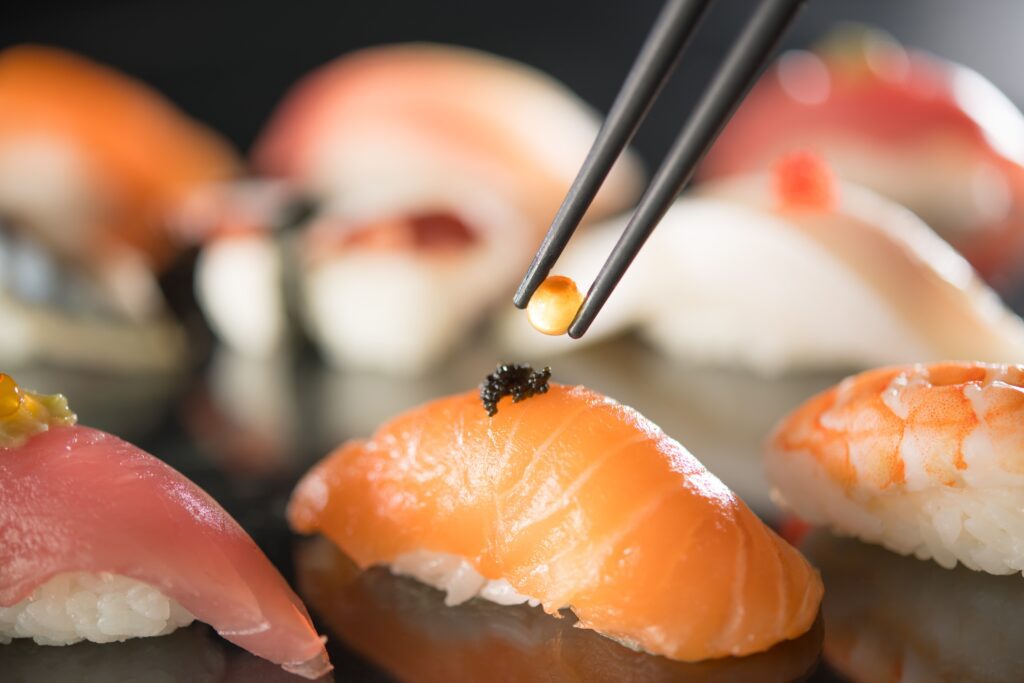
Let’s start with the most popular dish: sushi!
The history of sushi began like many foods: as a mistake. In ancient times, Japanese women would hide valuables in their rice in osprey nests from looters. They found that after time this would cause the rice to ferment and fish scraps from the osprey were mixed in. They found this preserved fish and made a tasty new Japanese dish!
It grew even more due to the influence of Buddhism in the 9th century. Buddhists generally abstain from beef and pork. The fish-based sushi became a popular dish and staple of the common Japanese Buddhists diet because of this.
Now you see sushi is the most popular Japanese food today with many different offerings around the world. While traditional sushi rolls consisted of fish, rice, and seaweed, the ingredient list has grown exponentially.
You can have sushi made with almost any food today. Various meats, vegetables, cheeses, and fruits can make their way into a sushi roll depending on what you want to order. The rice and seaweed are the only constant in the construction of sushi.
Ramen
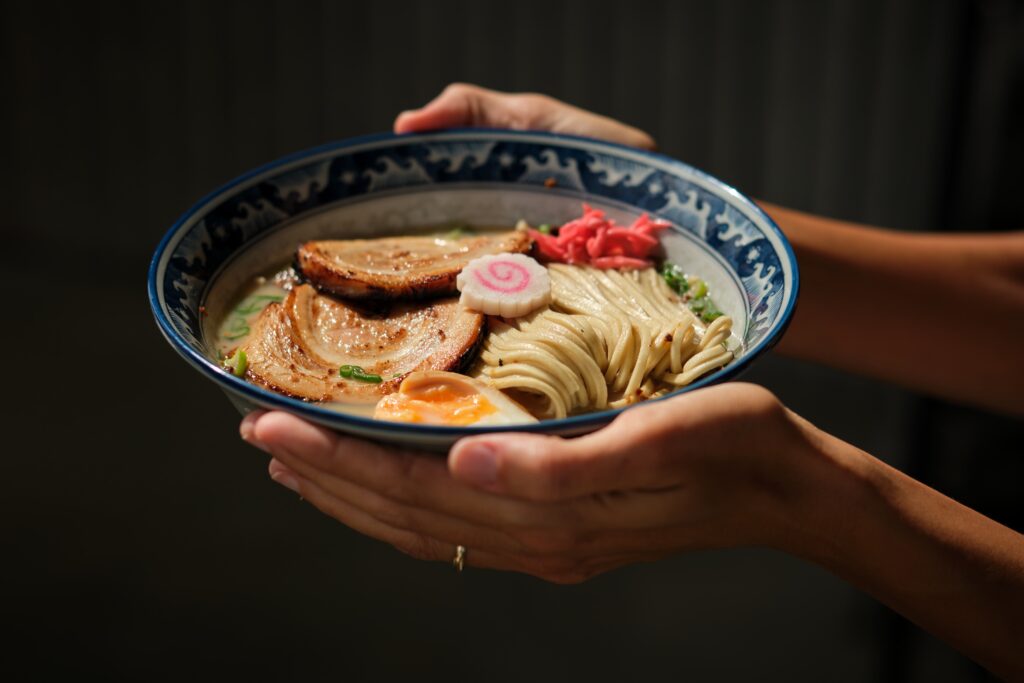
While ramen technically started in China, Japan is where it became popularized and is closer to what we see today. It is generally agreed upon that ramen first started in Japan around 1884.
Ramen consists of wheat noodles served in a meat or fish-based broth. It is then flavored with soy sauce, miso, or salt. Toppings vary widely and can include sliced pork, green onions, seaweed, boiled eggs, bean sprouts, bamboo shoots, and more.
There are numerous regional variations of ramen in Japan, each with its unique broth, noodle texture, and toppings.
- Tonkotsu: Originating from Fukuoka, it features a rich, creamy broth made from pork bones.
- Shoyu: Made with a clear, soy sauce-based broth and often found in Tokyo and eastern Japan.
- Miso: Hailing from Hokkaido, this ramen incorporates a broth flavored with fermented soybean paste (miso), giving it a hearty and slightly sweet taste.
- Shio: A clear, salty broth that originated in the coastal regions of Japan.
- Tsukemen: In this variation, noodles are served separately from the broth and are dipped into it before eating.
The stereotype with ramen is that it is the “poor college student” dinner. Costing less than a dollar and ready in less than five minutes is a great campaign. However, with all of these types of ramen, you will be able to truly taste and appreciate cultures from a world away.
Tempura
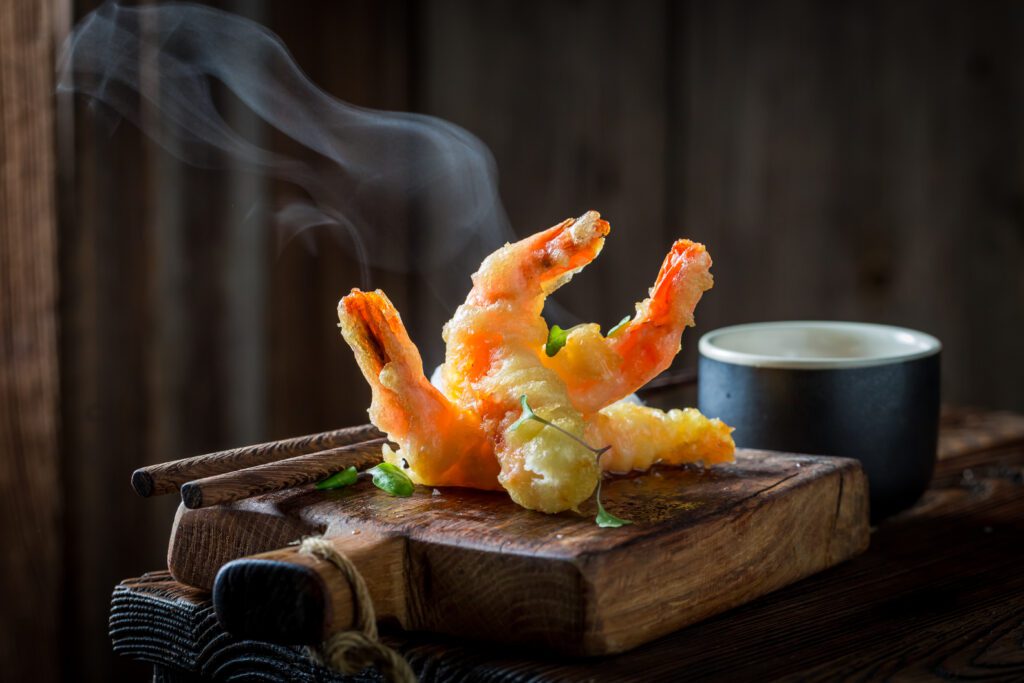
Time to talk about the Japanese version of fried food!
Tempura is the battering and frying of different Japanese foods from various meats to vegetables. This practice started in the 16th century when Portuguese Jesuit missionaries introduced a cooking technique called “peixinhos da horta,” meaning fish from the garden. The Japanese adapted this method to suit their tastes and ingredients, giving rise to tempura.
This method was considered uncommon in its infancy and was reserved for the rich and powerful of the time. As the Edo era eclipsed Japan, Tempura became a more common practice among the people. Its popularity grew as street vendors began to sell it on every corner.
Tempura remains a popular dish in Japan and is enjoyed both at home and in restaurants. High-quality tempura restaurants, known as “tempura-ya,” pride themselves on using fresh, seasonal ingredients and maintaining precise frying techniques. Tempura is often served as part of a multi-course meal (kaiseki) or as a standalone dish with a dipping sauce (tentsuyu) and grated daikon radish.
Globally, tempura has also gained popularity outside of Japan. While traditional Japanese tempura remains the standard, chefs in other countries often incorporate local ingredients and flavors into their tempura dishes.
Udon
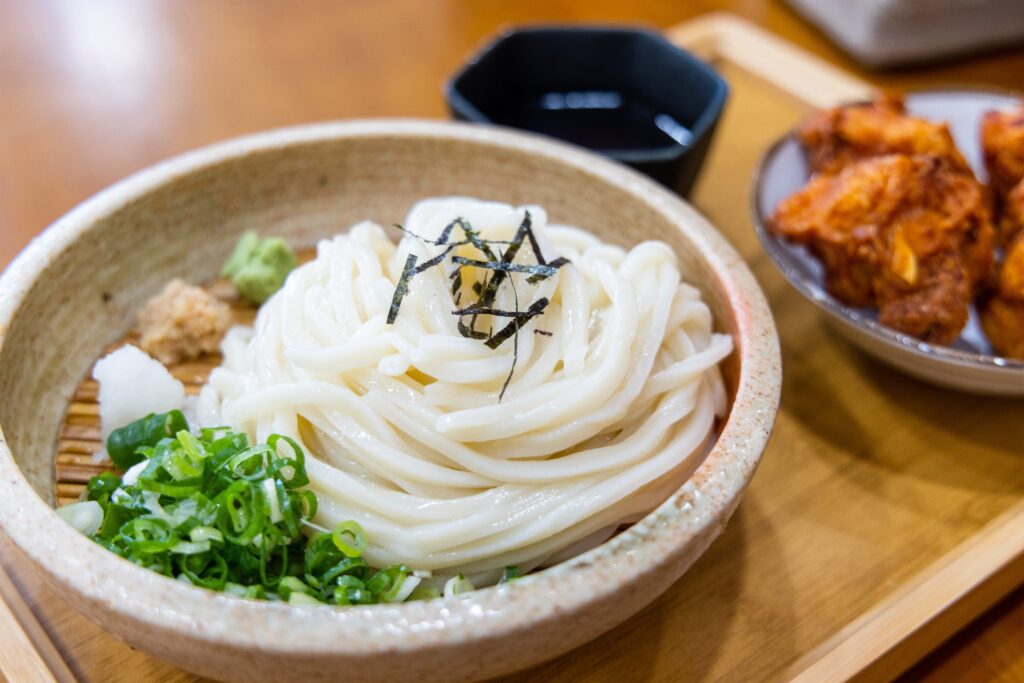
These are those tasty, thick wheat noodles that you see bowls of draped in the sauce of your choosing.
Like ramen, udon are believed to have originated in China and were introduced to Japan during the Nara period (8th century) by Buddhist monks. These noodles were a staple food of these monks. Over time, udon noodles became popular among the common people as well.
Udon noodles were originally made by hand using base ingredients like wheat, water, and salt, much like Italian pasta. What sets them apart is that udon noodles were made thicker than Italian noodles.
Like ramen noodles, udon has a variety of popular dishes from Japan.
- Kake Udon: Udon noodles served in a hot broth made from dashi (fish stock), soy sauce, and mirin (sweet rice wine), topped with sliced green onions.
- Kitsune Udon: Udon noodles topped with aburaage (fried tofu pouches) simmered in a sweet soy-based broth.
- Tempura Udon: Udon noodles served in a hot broth with tempura (battered and deep-fried seafood and vegetables) on top.
- Zaru Udon: Cold udon noodles served on a bamboo tray (zaru) with a dipping sauce (tsuyu) and various toppings.
Another aspect that separates udon from other noodles is that it is regional. You may be in north Japan and have one type of noodle that vastly differs from one you may have in Kobe, Japan.
While udon noodles are around today, they differ in how they are served. Udon noodles were often the entire meal. Today, chefs often incorporate udon noodles into fusion dishes or create unique interpretations while still honoring the traditional flavors and textures.
Yakitori
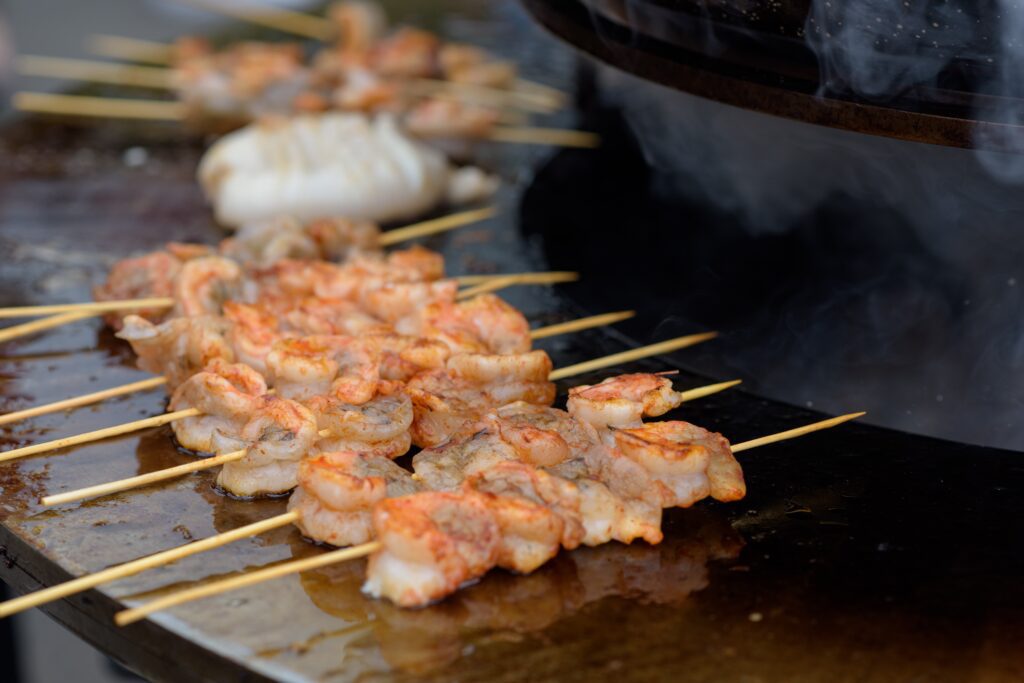
Yakitori is a popular Japanese food consisting of skewered and grilled chicken, often seasoned with salt or brushed with a sauce (tare). It is essentially the Japanese kabab.
This Japanese dish can trace its origins back to the Edo period. During this time, street food stalls, known as yatai, began to emerge in urban areas. They offered various grilled foods, including chicken skewers. Early versions of yakitori were simple and affordable snacks.
Chicken is the most common protein used in yakitori. Vegetables such as green onions (negima), shiitake mushrooms, and bell peppers are also used. In regards to seasoning, salt is the most common. Many are brushed with a sweet and savory sauce known as tare.
Tare is typically made from soy sauce, mirin (sweet rice wine), sake, sugar, and sometimes other ingredients like ginger or garlic. The sauce caramelizes on the skewers as they grill, imparting a rich flavor to the chicken.
Sashimi
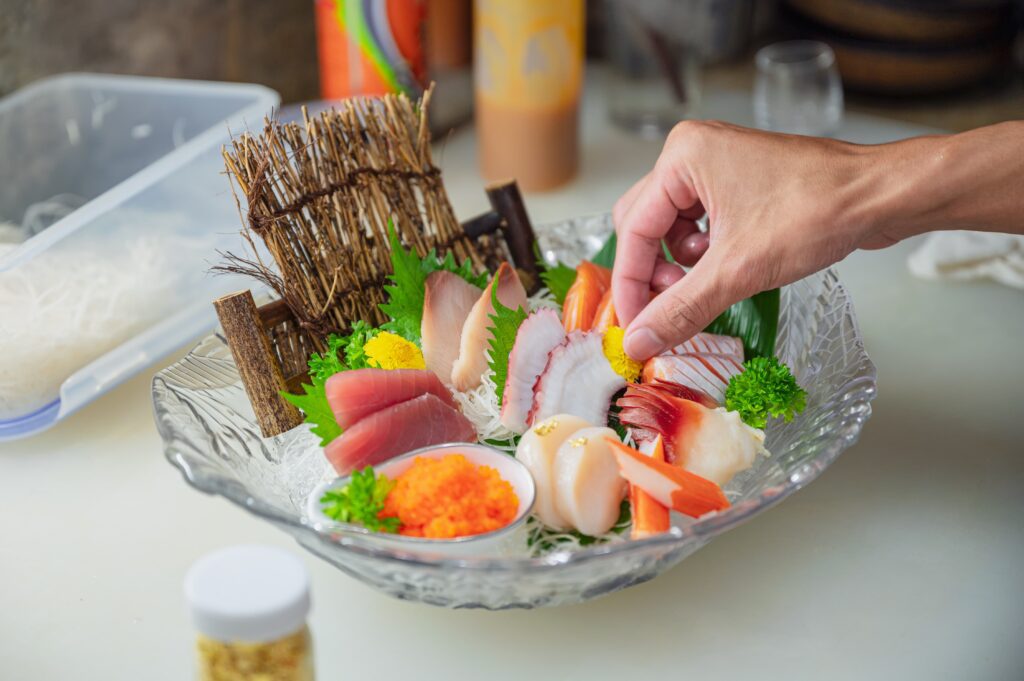
Sashimi is a traditional Japanese dish consisting of thinly sliced raw fish or seafood alongside garnishes such as radish, shiso leaves, seaweed, and slices of citrus fruits like lemon or lime.
The roots of sashimi can be traced back to ancient Japan, where fishermen would slice raw fish and eat it on their boats. The practice of consuming raw fish dates back centuries and was influenced by various cultural and culinary traditions, including those of China and Southeast Asia.
Over time, the preparation and presentation of raw fish evolved, leading to the creation of sashimi as it is known today. Sashimi gained popularity among the Japanese elite during the 17th century, particularly in the bustling port city of Edo (modern-day Tokyo). The people of Japan enjoyed this delicacy, often paired with sake.
The preparation of sashimi requires precision and skill. The fish must be extremely fresh and of the highest quality to ensure safety and flavor. Chefs are trained to slice the fish thinly and evenly, using sharp knives and delicate hand movements to create beautifully presented plates.
This does not mean all fish can become sashimi. There is a strict “sashimi scale” that all fish are graded against to be sure the fish is of a specific standard and quality.
Sashimi is another popular Japanese food that can differentiate depending on your chef. Chefs often incorporate local ingredients and flavors into their sashimi dishes while maintaining respect for the traditional techniques and presentation.
Tonkatsu
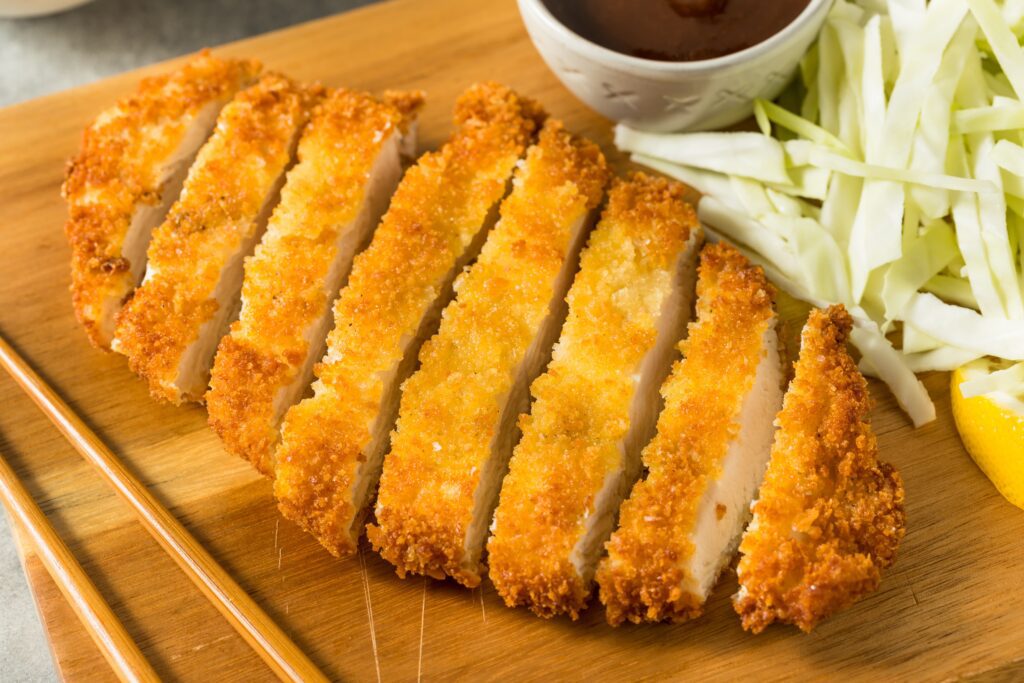
Time for something a little less fishy. Tonkatsu is a popular Japanese dish consisting of breaded and deep-fried pork cutlets. It is essentially a Japanese fried pork chop.
Tonkatsu is believed to have originated in Japan during the late 19th century. It is said to have been influenced by Western cuisine, particularly European breaded and fried dishes like schnitzel. The dish gained popularity as Japan opened up to more Western influences during the Meiji Restoration period (1868-1912).
While the exact origin of tonkatsu is debated, it is commonly attributed to a Tokyo restaurant called Rengatei. Other restaurants in Japan also began serving similar dishes around the same time however. Despite this, Tonkatsu quickly became a favorite among Japanese diners for its crispy texture and savory flavor.
To make tonkatsu, slices of pork (usually from the loin or filet) are pounded until thin, coated with flour, dipped in beaten egg, coated with breadcrumbs (panko), and then deep-fried until golden brown and crispy.
This popular Japanese food is commonly served with tonkatsu sauce. This is a tangy and slightly sweet condiment made from a combination of Worcestershire sauce, soy sauce, sugar, and other ingredients.
Gyoza
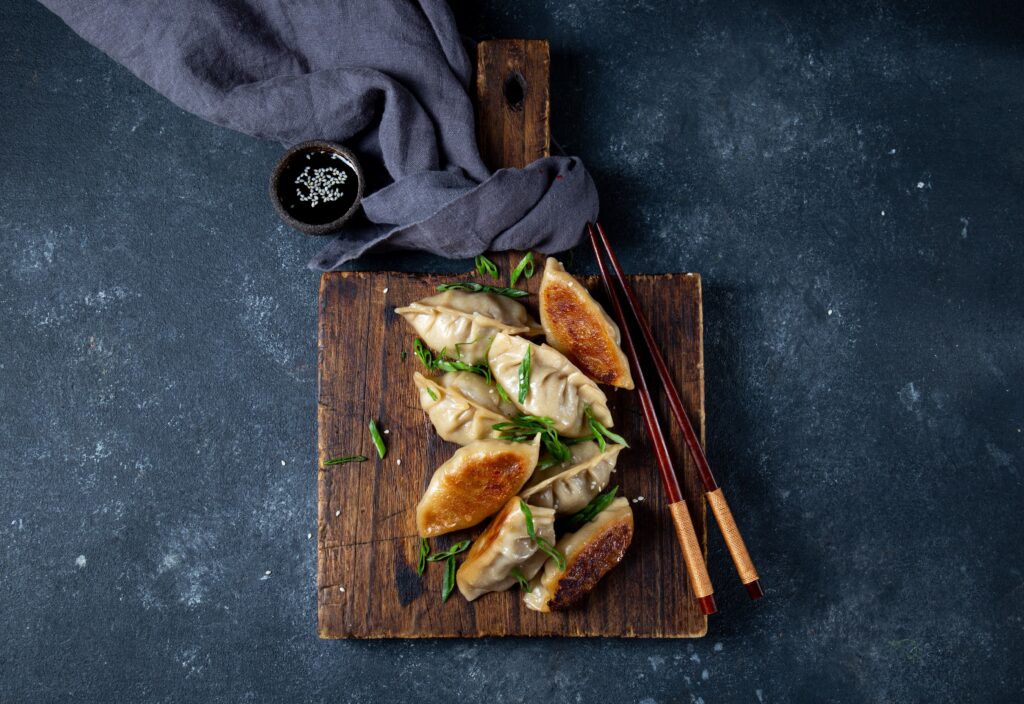
You probably know these by a different name: potstickers. These Japanese dumplings are filled with ground meat and vegetables, wrapped in a thin dough, and then pan-fried, steamed, or boiled.
Again, like ramen and udon, gyoza is believed to have originated in China. It was introduced to Japan through Chinese immigrants during the late 19th to early 20th centuries. Initially known as “jiaozi” in Chinese, these dumplings were brought to Japan and adapted to suit Japanese tastes and ingredients.
Traditional Japanese gyoza fillings typically include ground pork, cabbage, garlic, and ginger. For seasonings, typically soy sauce or sesame oil are used. However, there are many variations, including vegetarian options made with tofu or mushrooms.
The wrapping technique for gyoza involves placing a small amount of filling in the center of a round gyoza wrapper, folding the wrapper in half, and then pleating and sealing the edges to create a crescent-shaped dumpling. The pleats not only provide an attractive appearance but also help to seal in the filling. It is then cooked by either pan-frying, steaming, or boiling.
Gyoza is not only a popular appetizer option at restaurants, but is one of the most popular frozen foods found in your local supermarket.
Gyudon
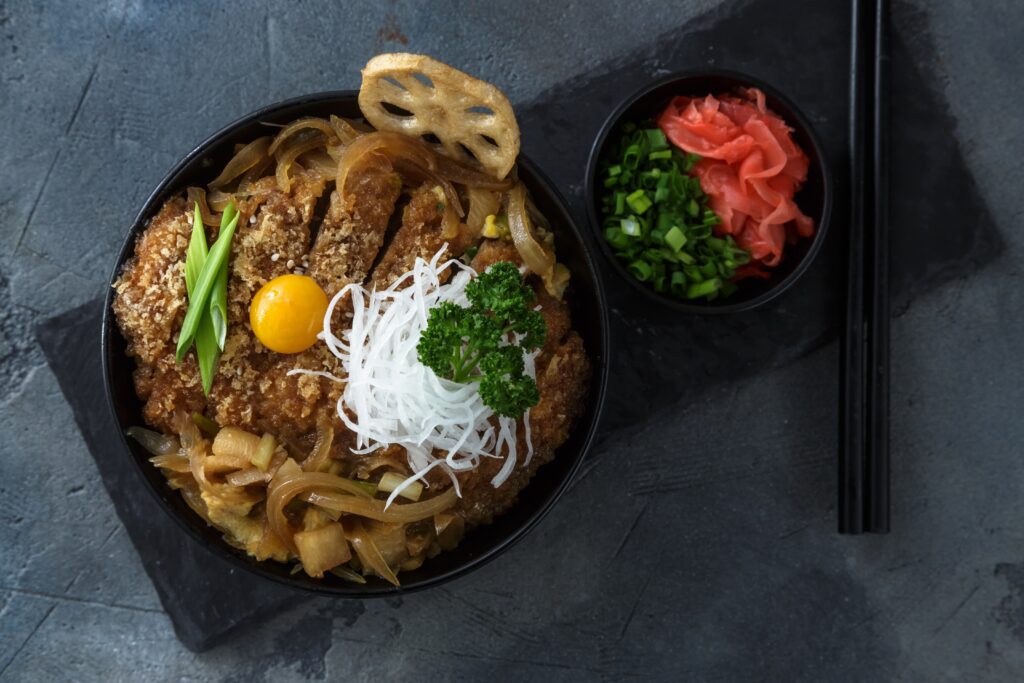
Gyudon directly translates to “beef bowl” in Japanese. This popular Japanese food consists of thinly sliced beef and onions simmered in a sweet and savory sauce, served over a bowl of steamed rice.
Gyudon was created in the late 19th-century. The dish is believed to have originated in the city of Kobe, where Western-style beef dishes became popular due to the influence of foreign traders and diplomats.
It gained widespread popularity during the early to mid-20th century. The rise in popularity coincided with the spread of Western-style eateries in Japan, particularly in urban areas. Gyudon was looked at as a quick and affordable meal, catering to the needs of busy workers and students.
The beef and onions are simmered until tender and flavorful, then served over a bowl of hot steamed rice. Some variations of gyudon may include additional toppings such as a raw or soft-boiled egg, sliced green onions, or pickled ginger.
This is one of the Japanese dishes that was meant more for the common man, much like a cheeseburger in the United States. Its availability and ease to make, customize, and eat contribute to its popularity today.
Unagi
No, this has nothing to do with that one Friends episode with Ross.

The popular Japanese food Unagi is freshwater eel in Japanese cuisine and has a rich history dating back centuries.
Unagi has been consumed in Japan since ancient times. Evidence suggests that eels were eaten as early as the Jomon period (14,000–300 BCE). It holds cultural significance in Japan and is often consumed during special occasions and festivals. It is believed to bring stamina and vitality, especially during the hot summer months when it is traditionally eaten.
This dish is typically grilled or broiled and served with a sweet and savory sauce made from soy sauce, mirin, sugar, and sometimes sake. The eel is often skewered and grilled over charcoal, imparting a smoky flavor to the tender meat. It is commonly served over a bed of rice or rolled in sushi.
In recent years, the population of Japanese eels has declined due to factors like overfishing, habitat loss, and changes in ocean currents. This has led to concerns about the sustainability of unagi farming and the future availability of eel dishes in Japan.
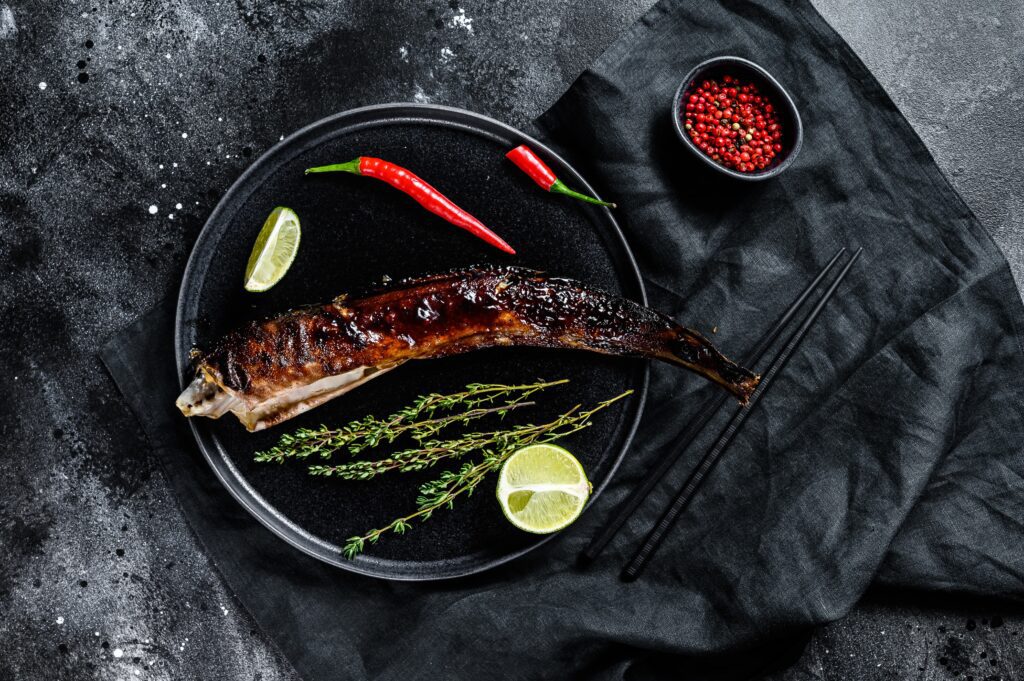
Try them all at Kobé today
By now, you must be starving! So come on in to Kobé Japanese Steakhouse to try one of our signature dishes. Sushi rolls, udon noodles, and sashimi are all waiting for you!
Test your friends to see who wants to be the first to try eel while you all dine on gyoza before you jump into a fantastic bowl of ramen. You can also check out our teppanyaki dinner show where you can see the cooking techniques that our chefs use to make these amazing dishes on a daily basis.